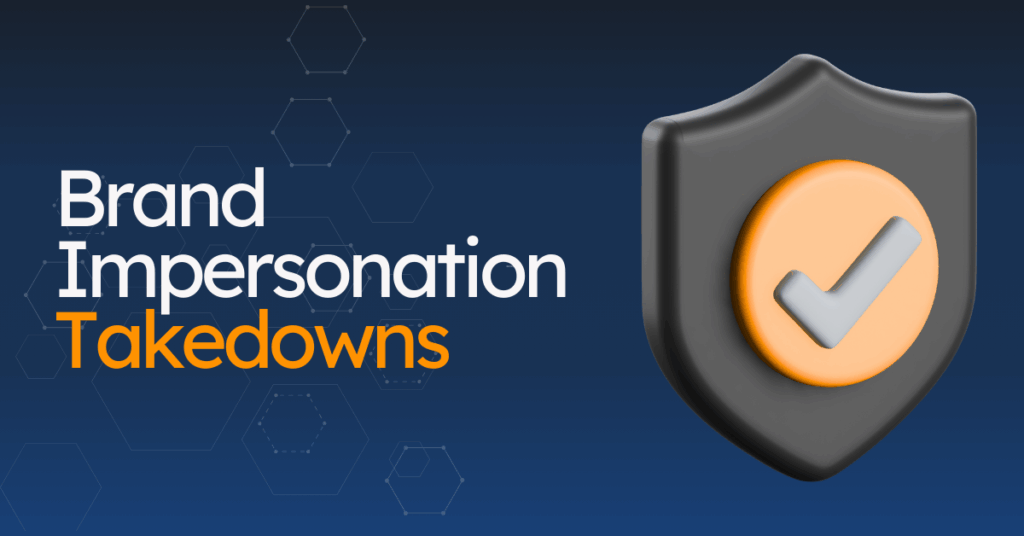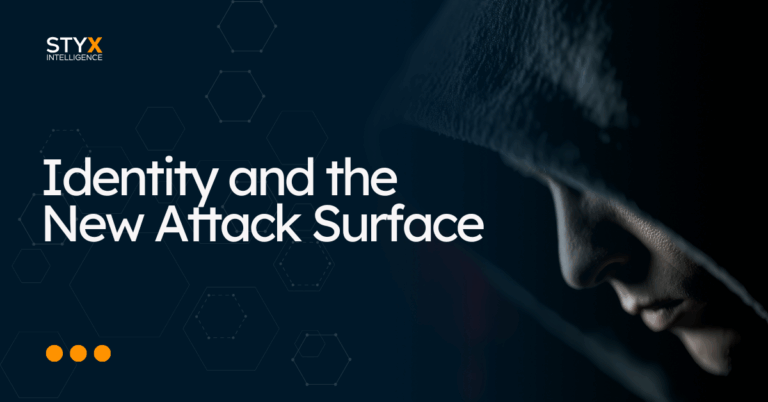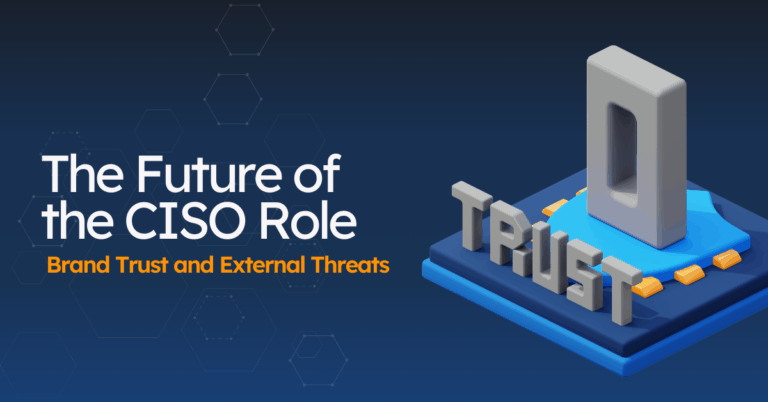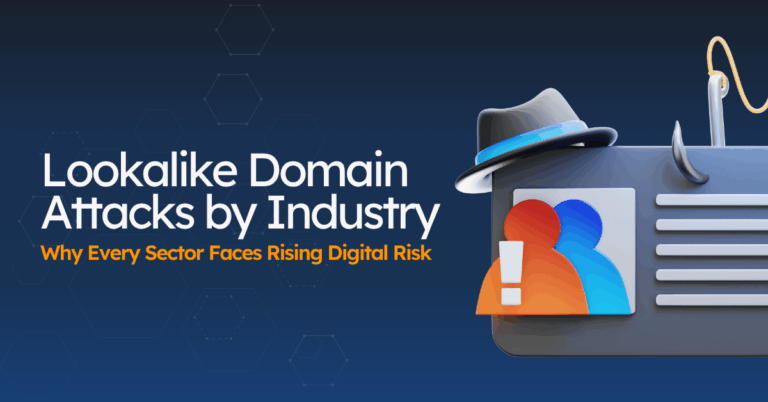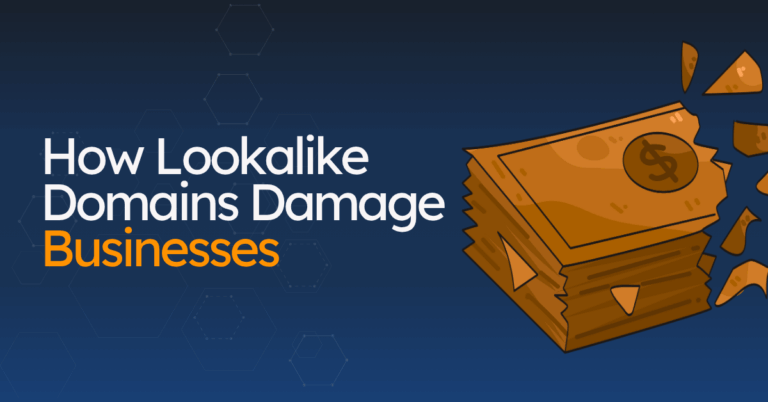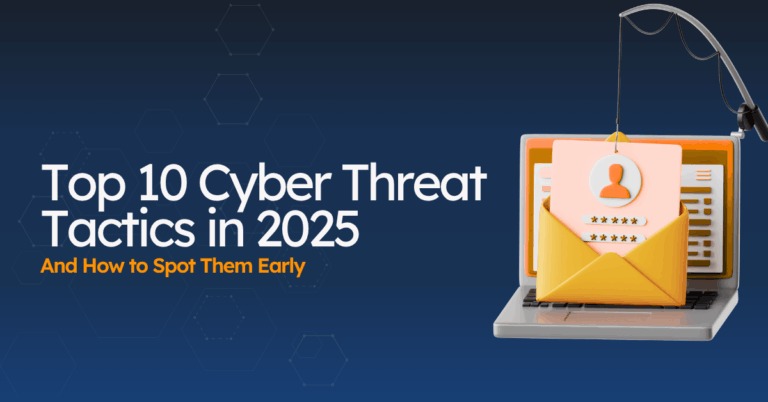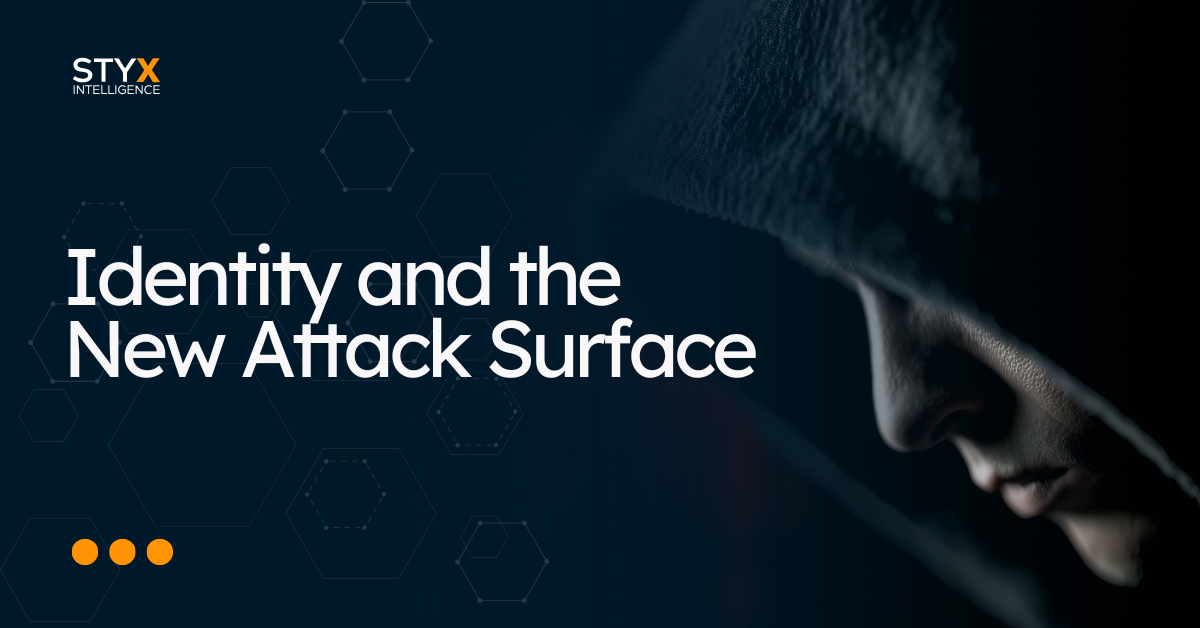What is Brand Impersonation?
Brand impersonation is when someone pretends to be your company, your product, or your people to deceive users. They copy your name, logo, visuals, and tone to look real, then push victims to click, sign in, pay, or share data.
Learn more: 7 ways how brand impersonations can hurt your business.
Common forms include:
- Fake websites and lookalike domains that clone login pages or promotions
- Social media profiles posing as your brand or executives
- Search and social media ads that use your name to drive to scams
- Fake job listings that harvest candidate PII and ask them for money
- Rogue apps or marketplace listings using your identity
- Messaging scams on WhatsApp, Telegram, SMS, or email
The goals are simple: steal credentials, take payments, spread malware, redirect sales, or damage trust. These attacks confuse customers, frustrate support teams, and create real risk for finance, legal, and security.
A brand impersonation takedown involves communicating with the hosting provider, registrar, platform, app store, or ad network and getting the fake asset taken down with evidence.
The faster you act, the smaller the exposure window and the less harm to customers and reputation.
Where Brand Impersonation Shows Up
Impersonation appears across channels your customers use every day. Watch these first:
1. Domains and websites
- Lookalike domains and subdomains
- Cloned login, checkout, and promo pages
- Internationalized domains (swapped characters) and typos
- QR-code landing pages
2. Social platforms
- Fake brand pages and executive profiles
- “Support” accounts replying in your comment threads
- Giveaway and promo scams using your logo and tone
- Deepfake video or audio posts tied to fake offers
Learn more: How to Spot and Take Down Fake LinkedIn Accounts.
3. Search and ads
- Sponsored search ads that route to phishing (You can check out this APWG report)
- Shopping ads for fake products
- SEO-cloned pages that outrank your real ones during campaigns
4. Job boards and hiring sites
- Fake roles copying your postings and HR contacts
- Off-platform “interviews,” fee requests, or document uploads
5. App stores and marketplaces
- Rogue mobile apps using your name or icon
- Counterfeit or unauthorized listings with your branding
- Publisher names like “Brand Support” or “Brand Official”
6. Messaging channels
- WhatsApp/Telegram/SMS accounts posing as support or sales
- Direct messages on LinkedIn, X, Discord, or Facebook
7. Email and newsletters
- Display-name spoofing and lookalike sender domains
- QR and callback scams tied to lookalike sites
- Invoices and payment updates that mimic your format
8. Forums, blogs, and news comments
- Fake announcements, policy changes, or “urgent” recalls
- Impersonated replies that push users to external forms

This is the map. Next, we’ll show how to run a brand impersonation takedown against each channel without bloat or delay.
Want a detailed breakdown of how takedowns actually work? This guide explains the entire process, step by step.
When to Use a Takedown
Not every suspicious post or domain deserves the same effort. Use a brand impersonation takedown when the content misleads users, abuses your identity, or drives harm. The faster you decide, the smaller the exposure window.
Clear green lights for a takedown
If any of these are true for the impersonation, act now:
- Impersonation is explicit: Your name, logo, brand voice, or an executive’s identity appears as if it’s you.
- There’s a payload: There is a page or profile that collects logins, payments, documents, or installs malware.
- High visibility: It’s running ads, ranking in search, trending on social, or spoofing your careers page.
- Financial risk: It requests money, crypto, card data, or bank details. (Quick note: The FTC Data Spotlight (Aug 2025) shows imposter scammers stealing large sums from older adults, underscoring the need to act fast on brand impersonation takedowns.)
- Policy violations: It breaks platform ToS, registrar/host abuse rules, or infringes trademarks.
- Targeted audiences: It aims at your customers, applicants, partners, or employees.
Situations to monitor, then escalate
Some items start low-risk but can heat up fast:
- Parody or commentary that doesn’t pose as you, but later adds payment or login links.
- Parked lookalike domains with no content today, but DNS or hosting goes live tomorrow.
- Copycat posts that borrow your visuals without impersonation claims, watch for links and DMs.
Such cases should be monitored actively. If it generates clicks, runs ads, or begins collecting data, proceed to takedown.
Quick Framework To Follow
Ask five questions:
- Is someone pretending to be you or your execs?
- Is there a link, form, download, phone, QR, or payment route?
- How many people can see it right now? (ads, hashtags, search rank)
- Which policy, law, or right does it break? (ToS, abuse terms, trademark, phishing/malware)
- Who could be harmed today? (customers, applicants, staff, partners)
If you answer “yes” to #1 or #2, or you see high visibility in #3, you have enough to request a brand impersonation takedown and contain the damage.
If you need more evidence, here are 7 ways brand impersonations hurt revenue, trust, and hiring, with real examples.
The Brand Impersonation Takedown Process
Here’s the fastest, cleanest way to run a brand impersonation takedown from start to finish.
1. Detect
Find the fake before customers do:
- Brand monitoring alerts (domains, social, ads, app stores)
- Customer and employee reports
- Social listening and search results during campaigns
2. Verify
Confirm it’s impersonation or abuse:
- Uses your name, logo, or exec identity
- Collects logins, payments, files, or installs malware
- Violates platform terms, registrar/host abuse rules, or trademarks
If yes to any of these, move to takedown.
3. Gather Evidence
Make removal easy for the provider by providing:
- URLs, full redirect chain, and screenshots
- Timestamps and the path a user takes to reach it (ad → page → form)
- WHOIS/DNS data (registrar, name servers), hosting IP, and headers
- Proof of brand ownership or trademark (when needed)
Keep it factual and concise.
4. Map the Targets
Notify the entities that can take it down:
- Web: registrar, host, CDN, DNS provider
- Social: platform abuse/trust & safety
- Ads/Search: ad network, search engine ads team
- Apps/Marketplaces: app store or marketplace operator
List them once, reuse for every case.
5. Submit the Takedown
Use official abuse channels first:
- Provider forms/portals, abuse@ email addresses, or APIs (where available)
- Include evidence, harm, and the exact policy violated
- Ask for removal, suspension, or de-indexing
One case per provider. Parallel submissions save hours.
6. Follow Up and Escalate
Don’t let it stall:
- Track case IDs and due dates
- If no action: escalate to the registry, upstream host, or platform contacts
- For social, escalate through verified-brand programs if available
7. Reduce Exposure While You Wait
Limit damage during review:
- Submit the URL to browser/AV blocklists
- Pause related ad routes by notifying ad networks
- Alert support and post a short notice on official channels (no scam links)
8. Close and Watch for Repeats
Finish strong:
- Confirm removal and document what worked
- Search for mirrors, short-links, and clones
- Add recurring offenders to a watchlist and prebuilt evidence pack
- Monitor the case for a while to ensure it does not get reactivated on appeal or through new infrastructure
This blueprint keeps each takedown fast, consistent, and trackable, so you remove more fakes in less time and shrink the exposure window.
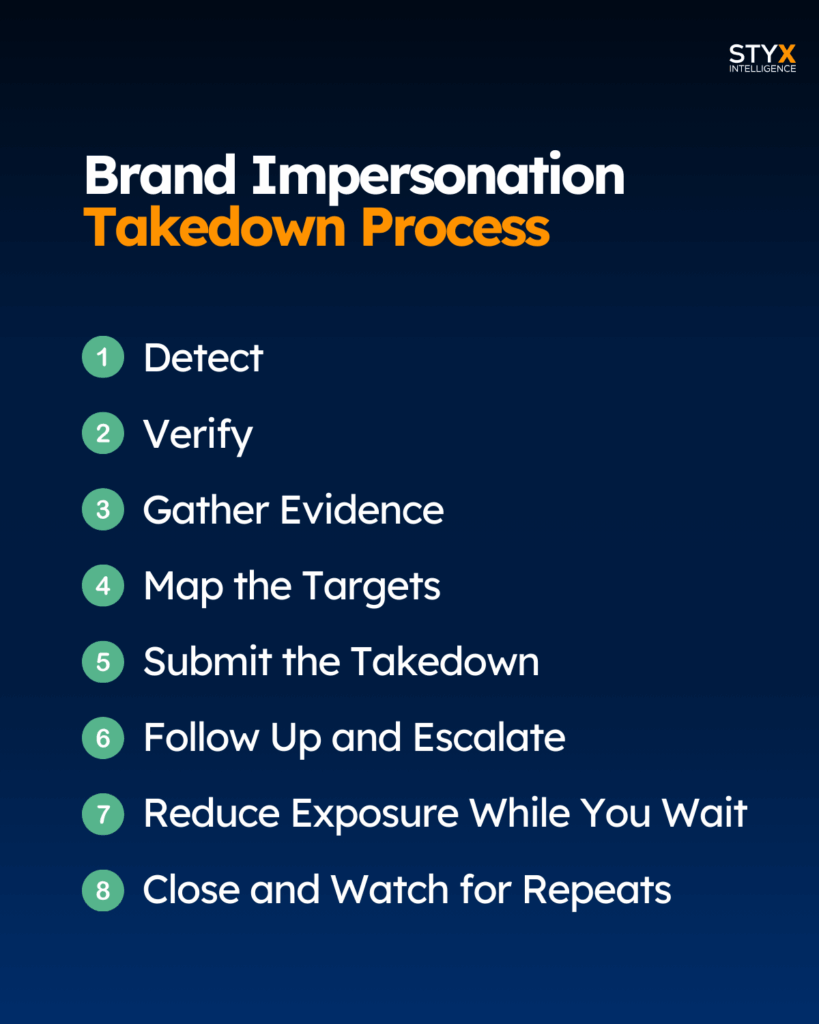
Brand impersonation takedowns are one of the core pillars of modern brand protection.
Manual vs. Automated Takedowns
You can run a brand impersonation takedown by hand. For one-off cases, it works. You collect proof, find the registrar or platform form, submit the report, and follow up. If volume is low and risk is contained, manual is fine. See previous section for each step.
The problem?
It breaks when attackers scale. Cloned sites move hosts. Ads and short links hide the target. Fake profiles multiply across platforms. Manual work slows down where speed matters most.
Manual: Pros and Cons
Pros
- Full control of wording and evidence
- Flexible for edge cases and legal nuances
- No tools required
Cons
- Slow to identify hosts, registrars, and the right abuse channels
- Hard to notify multiple providers in parallel
- Inconsistent evidence packs slow provider review
- Poor tracking across cases, retries, and outcomes
- Easy to miss clones, mirrors, and reappearing threats
Automated brand impersonation takedown
- Continuous detection across domains, social, ads, app stores, and messaging
- Built-in validation (impersonation, payload, violations)
- Evidence packs with URLs, redirect chains, screenshots, WHOIS/DNS, headers, timestamps
- Routing to the right providers (registrar, host, CDN, platform, ad network)
- Parallel notifications with clean, provider-specific templates or APIs
- Automatic retries, escalation paths, and status tracking
- Browser/AV blocklist submissions while removal is pending
- Recurrence monitoring after takedown

How StyxView automates brand impersonation takedowns
StyxView is designed to quickly identify and take down brand impersonations, reducing exposure time.
- Finds impersonations early: Monitors the surface, deep, and dark web for cloned sites, lookalike domains, scam job ads, rogue apps, and impersonated profiles tied to your brand and executives.
- Prioritizes what matters: Uses a Digital Risk Score (DRS) so high-impact cases go first: active phishing, payment capture, high visibility, executive misuse.
- Builds the evidence for you: Auto-captures URLs, redirect chains, screenshots, WHOIS/DNS info, hosting IPs, and timestamps into a single case file. No manual stitching.
- Maps the right targets: Identifies registrar, host, CDN, app store, social platform, and ad network. Prepares provider-ready notices that match their terms and abuse workflows.
- Notifies in parallel: Submits to multiple entities at once using forms, abuse mailboxes, and direct integrations where available. This shortens the exposure window.
- Follows up without delay: Tracks case IDs, responses, and SLAs. If a provider stalls, StyxView escalates to the registry or upstream host with a clean evidence trail.
- Shields users while you wait: Sends the URL to major browser and AV blocklists to reduce clicks during review. Alerts your team so support can handle inbound questions fast.
- Watches for reappearance: Flags mirrors, new short links, and re-registered lookalikes.
- Keeps stakeholders aligned: Real-time status, dashboards, and exportable reports for security, legal, PR, and exec briefings. Integrations to SIEM and ticketing keep workflow in sync.
Result: Fewer manual steps, faster removals, and clear proof of impact. You spend time on decisions, not chasing forms.
Learn more: The Future of Digital Risk Protection
While the Takedown Is Pending
A brand impersonation takedown can take minutes or it can take longer, depending on the provider. Don’t wait and cut exposure while the case is under review.
Block access for users
- Submit the URL to major browser and antivirus blocklists so users see a warning page.
- Add temporary blocks in your secure web gateway, DNS filter, or firewall.
- If the fake uses a short link, block the final URL and the shortener link.
Shut down traffic sources
- Report the ad to the ad network and search platform to stop paid traffic.
- Ask partners to remove or flag links if they are being abused.
- Kill QR routes tied to the campaign (landing pages, link hubs).
Alert the right audiences
- Brief your support team and social team so they know what to say and how to spot reports.
- Post a short notice on official channels if customers are at risk. Keep it clear. Do not link to the scam.
Harden the email path
- Enforce SPF, DKIM, and DMARC p=reject to reduce spoofing success.
- Rotate or reset exposed sender addresses if needed.
Capture evidence and watch for clones
- Log new URLs, redirects, and screenshots as the scam shifts.
- Search for mirrors on other hosts, shorteners, or app stores.
These actions shrink the window of harm and help the takedown land faster with better results.
Learn more: What is a takedown? And why it matters.
Reduce Future Risk
Brand Impersonation Takedowns fix what’s live. You also need to cut repeat risk. Make these moves standard.
Own your namespace
- Register priority domains and the most common lookalikes.
- Lock DNS. Monitor new registrations that target your brand.
- Verify official pages on major social platforms. Use consistent handles.
Harden email
- Enforce SPF, DKIM, and DMARC p=reject.
- Publish a short “how we contact you” policy. State what you never ask for.
- Rotate exposed sender addresses fast when you see abuse.
Make takedowns faster by default
- Keep trademarks current. Store proofs (logos, certificates, company info).
- Maintain a contact book for hosts, registrars, platforms, app stores, ad networks.
- Use a simple evidence template (URLs, redirects, screenshots, timestamps, WHOIS/DNS).
- Keep one clear runbook so anyone can file a brand impersonation takedown in minutes.
Protect hiring
- Centralize all openings on your careers page.
- Use one recruiting domain. Don’t mix personal inboxes.
- Post a standing warning about fake job ads and how to report them.
Control your brand assets
- Host a public brand kit. Specify allowed use.
- Change sensitive visuals that scammers lift often (e.g., support banners).
- Sign official downloads; remove old installers and dead pages.
Monitor the channels that matter
- Domains and websites (lookalikes, clones, QR landers).
- Social profiles and replies (fake support, exec impersonation).
- Ads and search (keyword hijacking, fake promos).
- Job boards, app stores, marketplaces (rogue listings).
- Messaging (WhatsApp/Telegram/SMS outreach).
- Executive names and titles (common impersonation targets).
Align the response
- Give support and social teams short scripts and a decision tree.
- Post brief customer notices only when risk is real. Don’t link to the scam.
- After removal, recheck search results, ads, and socials.
Tighten your vendor path
- Add anti-impersonation clauses to contracts.
- Require DMARC and abuse contacts.
- Monitor for vendor misuse of your brand and report fast.
Done right, this lowers exposure, speeds every brand impersonation takedown, and keeps trust intact.
See what’s impersonating your brand right now and take it down fast.

